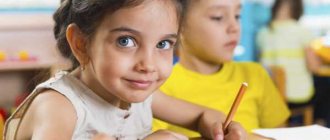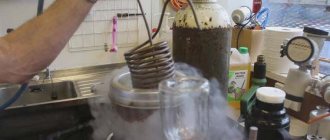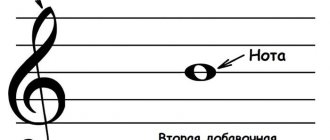Didactic game “Ask a friend a question”
The goal of the game is to teach preschoolers to communicate competently through questions and answers. The lesson can be in pairs or in a group.
The first player says who he would like to become. And he turns to the interlocutor why he thinks it is good to be this creature or object. The interlocutor answers based on his own ideas. Answers must be detailed. You can supplement the conversation with other questions. For example, ask what benefit this object or creature brings by its existence.
Next, the interlocutor asks the first player in a similar way. If the game is a group game, the participants are divided into two subgroups for conversation.
Reasoning about friendship
The goal of the game is to form an idea of the meaning and significance of friendship.
The presenter asks thematic questions, and the players reason and give detailed answers. Here are possible questions:
- what true friendship should be like;
- when friends rejoice;
- when friends are upset;
- what gift to give to make a friend happy;
- what games can you play with friends.
It is important to ensure that children give logically correct answers. If necessary, you can ask leading questions.
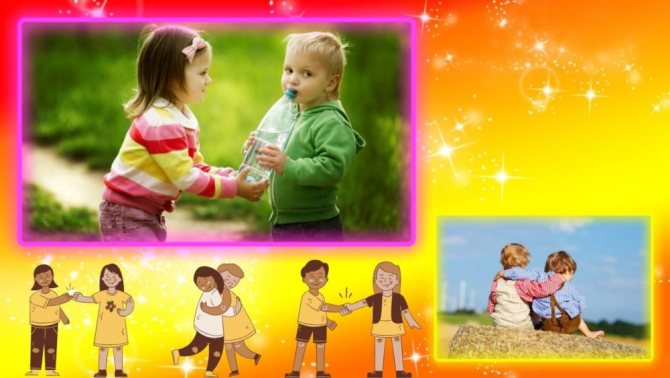
Bridge of Friendship
The game teaches you to focus on the emotional and behavioral characteristics of a friend, look for the positive, develops communication skills and determination.
For this activity you need a straight and long object without sharp or cutting edges. A felt-tip pen with a cap or a pencil that has not yet been sharpened will do. Children are divided into pairs and sit opposite each other. The leader fixes the object between their foreheads, and the players must hold it while saying positive words.
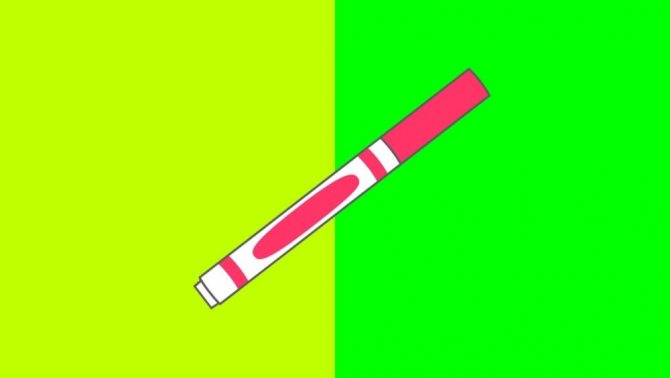
Game – journey “In search of friendship”
Author: Vera Aleksandrovna Belikova, teacher
MKDOU "Kalacheevsky kindergarten No. 1 of general developmental type"
Game - travel Topic: "In search of friendship." Senior group
Goal: to promote the development of team interaction within the children's team. Objectives: – to promote the development of a sense of camaraderie and mutual assistance in children; – contribute to strengthening friendship in the children's team; – promote the development of the ability to make decisions independently; – promote the development of cognitive interest and imagination of preschoolers; – consolidate knowledge of the number series (1-10); – fix forward and backward counting within 10; – expand your horizons and erudition. Equipment: multimedia equipment, presentation “Shelezyak’s Planet”, “Flight into Space”, audio recording “SOS signal from Shelezyak’s Planet”, attributes for the games “Guide” (masks, blindfolds), “Tripods”, star maps for p \and “Connect the dots”, Friendship talisman, stone chest, number cards - keys, stacks, music from the cartoon “The Secret of the Third Planet” - composer Alexander Zatsepin. Preliminary work: conversations “What is Friendship?”, “Who can be called a true friend?”, Reading the stories of V. Oseeva “The Watchman”, “Blue Leaves”, L. Tolstoy “The Lion and the Dog”, V. Kataev “The Seven-Flower Flower” ”, r\i “Where have you been, what have you seen?”, r\i “Guide”, r\i “Tripods”, r\i “Apple on a plate”, r\i “Mushroom”, sports relay races. Course of the lesson 1. a) Teacher. Guys, we talked a lot about friendship, about friends. And today, I want to introduce you to Yuri Entin’s poem “About Friendship”. The breeze is friends with the sun, And the dew is with the grass. A flower is friends with a butterfly, You and I are friends. Everything with friends in half. We are happy to share! Only friends should never quarrel! Educator. Guys, what is this poem about? What it should be. according to the poet, friend? What shouldn't he do? The children answer.
b) Radio communication with space is activated. Message: a robot from the planet Shelezyaka asks for help. He asks to find the talisman of Friendship, which was stolen by the space pirate Glot. Discussion of the message: what the robot is asking for, why the inhabitants of the planet quarreled, how to help them.
Educator. Guys, what should I do? Can we help the inhabitants of the planet Shelezyaka? Are you ready to go on such a dangerous expedition? Children. Yes. Educator. Can one person fulfill this request? Why? What will help the team complete this dangerous mission? The children answer. (Friendship, mutual assistance) Educator. Guys, our spaceship "Pegasus" is designed only for a children's team, and I won't be able to fly into space with you, do you still want to fly? Children. Yes! Educator. Okay, then you must choose a ship captain whom you will obey in everything, and the captain will take care of the crew. Children. They choose a captain, the captain appoints his deputy. Educator. In order to complete a rescue mission, you need to plot a route, and then you will find out in which sector of the starry sky the dangerous planet Medusa and the planet Shelezyak are located. (Children are planning a route: p\i “Connect the dots”).
Educator. Guys, you are going into space alone, you are now a team. I will be watching you from the Control Center and helping you with advice in dangerous situations. To go on such a dangerous expedition, we need a fighting spirit, and our gymnastics will help lift our spirits. c) Finger gymnastics “Friendship”: work in pairs. Educator. You also cannot recover without special equipment, here it is in the space backpack, it cannot be lost, the captain is responsible for this. Educator. In order for your spaceship to take off from the ground, you need to turn on the countdown. Captain, command. Captain. Fasten seat belts. Countdown 10-9-8-7-6-5-4-3-2-1. (Children count together).
Flight to music from the cartoon “The Secret of the Third Planet” (composer Alexander Zatsepin).
2. Planet Medusa a) Educator. Attention attention! Here you are on the planet Medusa, I want to please you, it has an atmosphere like on your home planet Earth, and you can leave the ship without a spacesuit. Otherwise it is a very dangerous planet. Evil tripods live on it, they destroy everyone who does not have 3 legs. You need to disguise yourself and turn into tripod creatures. The captain opens the space backpack, choose the necessary attributes, and the children are divided into pairs. R\i "Tripods" (in pairs).
b) Educator. Look around where Glot could hide the talisman of Friendship. Children find an unusual stone chest with locks with number cards, and keys (with numbers) that must be cleared to see the image. Children complete the task and take out the Friendship talisman. The captain selects the person responsible for storing the talisman.
c) Educator. Attention attention! The evil tripods are gone, but soon radiation that is dangerous for your eyes will begin. You won't have time to get to the ship. You need to wear special equipment. There are two masks in the set; the rest wear protective bandages.
The captain distributes attributes for the “Guide” team. He and his assistant form a team in two columns and lead the columns to the ship.
Educator. Congratulations, you have completed the task, now you need to return the talisman to the owners. Captain. Fasten seat belts. Countdown 10-9-8-7-6-5-4-3-2-1. (Children count together).
Flight to music from the cartoon “The Secret of the Third Planet” (composer Alexander Zatsepin).
3. Planet Shelezyak Educator. Attention attention! You are approaching the planet Shelezyak. The atmosphere is like on our Earth. A robot is approaching you. The captain orders to abandon the ship.
Robot. I greet you. How did you manage to cope? What helped you? Children. Friendship helped us. Robot. Do you have a friendship talisman, show it to me! Children. We don’t have one, we are friends without a talisman. We are friends because we respect and love each other. Robot. Thank you! We, too, will try to learn to be friends like this. Children. Goodbye! Robot. Have a nice trip! Captain. Fasten seat belts. Countdown 10-9-8-7-6-5-4-3-2-1. (Children count together).
Flight to music from the cartoon “The Secret of the Third Planet” (composer Alexander Zatsepin).
4. Planet Earth Educator. Attention attention! You are approaching your home planet Earth! What else is it called? ("Blue Pearl") Look how beautiful she is! And so that it does not become as terrible as the planet Medusa, it must be protected! The captain orders to abandon the ship. Educator. Guys, have you completed the mission to save the friendship of the residents of Shelezyak? Was it difficult for you? Why? What helped you along the way? The children answer.
Educator. After such a difficult journey, you need to rest. Goodbye!
Literature used: Gubanova N. F. Play activities in kindergarten. - M.: Mozaika-Sintez 2010. Petrova V.I., Stulnik T.D. Ethical conversations with children 4-7 years old. - M.: - Mosaic-Sintez, 2007 Krasnoshchekova N.V. “Plot-role-playing games for preschool children” (School of Development), Rostov n/d: Phoenix Publishing House 2007 –
What is my friend interested in?
The game forms an idea of what a hobby, a personal passion, is. Preschoolers learn what their friends are interested in, and they may want to share their hobby.
To play, you need to prepare pictures depicting objects that can be attributes of different types of hobbies: a scooter, figure skates, a hockey puck, a soccer ball, a tennis racket, dolls, books, an easel, a needle and thread, a piano, a violin, potted flowers, etc.
Each player takes turns choosing a picture that matches the hobby of one of the children in the group and talks about this child without saying his name. For example: “We have a girl in our group. She loves to paint with watercolors. She's great at it." The rest of the players guess from the picture and verbal description who they are talking about.
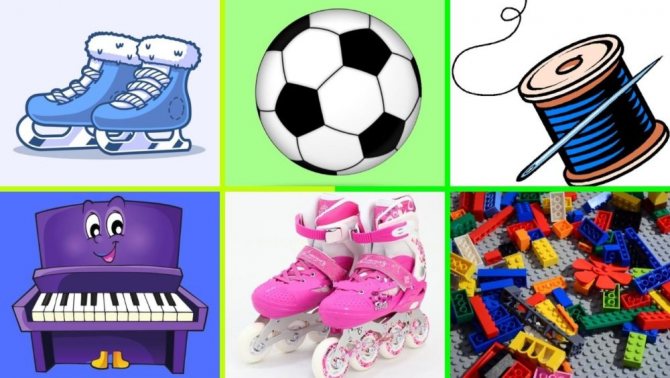
Card index of games "Friendship"
teacher
Egorova Elena Pavlovna,
MBDOU TsRR d/s No. 242 “Sadko”, Ulyanovsk
Card index of games "Friendship"
"Games for building friendships"
Goals:
Development of communication skills, feelings of empathy, tolerance;
Development of friendly relations;
Formation of a caring and positive attitude towards each other;
Increasing children's self-esteem.
"Magic glasses"
An adult brings a surprise box to the group and solemnly announces: “I want to show you magic glasses. The one who puts them on will see only the good in others, and even the good that a person sometimes hides from everyone. Now I’ll try on these glasses... Oh, how beautiful, funny, smart you all are!” Approaching each child, the adult names some of his merits (someone draws well, someone knows how to build with blocks, someone has a beautiful dress, etc.). “And now I would like each of you to try on these glasses and take a good look at your neighbor.
Maybe they will help you consider something you didn’t notice before.”
Progress of the game:
Children take turns putting on magic glasses and naming the virtues of their comrades.
If someone finds it difficult, you can help and suggest. Repetition of the same virtues is not scary here, although it is advisable to expand the circle of good qualities. “Magic Chair”
Game progress:
One child sits in the chair, the rest say kind, affectionate words and compliments about him.
You can hug, stroke, kiss the person sitting. “Waves”
The children sit in a circle, and the adult invites them to remember the summer when they swam in a river, in a pond... “But it’s best to swim in the sea,” he says, “because the waves in the sea are so pleasant when they gently stroke and wash you. The waves are so cheerful and kind! And they are all very similar to each other. Let's try to bathe each other in such waves! Let’s stand up, smile and try to make waves with our hands.” Children depict waves following the leader, who makes sure that all the waves are gentle and cheerful.
Progress of the game: After such “training,” the adult invites all the children to take turns “swimming in the sea.” The “bathe” becomes one, one at a time, run up to him and gently stroke him, making the same movements. When all the waves “stroke the bather,” he turns into a wave, and the next one “dives” into the sea.
"I want to make friends with you"
Progress of the game:
The driver is selected.
He says the words: “I want to make friends with...”. Then he describes the appearance of one of the children. The one who was wished for must recognize himself, quickly run up to the driver and shake his hand, then he becomes the driver. “Photos of Friends”
Game progress:
Photos of children in a group are laid out on the table.
The child is asked to take 2-3 of them and explain why he chose them, describe at what moment the peer is captured, what his mood is, what it is connected with, tell what kind of child he is, why he is friends with him. “Call your friend affectionately”
Game progress:
The teacher explains to the children that there are many kind, pleasant and affectionate words that are called compliments.
The teacher invites the children to stand in a circle so that they can see each other’s eyes, and, passing an inflatable heart, say some kind word to their neighbor. After the game, everyone notes that the warm words made them feel happier and happier. “Pyramid of Love”
Game progress:
Children sit in a circle.
The teacher says: “Each of us loves something or someone, but we all express our love differently. I love my family, my children
, my home, my city, my work.
Tell us who and what you love children's stories follow )
.
Now let’s build a “pyramid of love”
from our hands.
I will name something I love and put my hand on it, then each of you will name what he loves and put his hand on top of mine. (Children build a pyramid.)
Do you feel the warmth of your hands?
Are you pleased? Look how high our pyramid is, and all because we know how to love ourselves and are loved.” “Multi-colored bouquet”
Game progress:
Each child declares himself a flower and finds another flower for his bouquet, explaining his choice. Then all the “bouquets” are combined into one bouquet and a round dance of flowers is arranged.
Friendly dance
The game develops empathy, teaches one to perceive other people’s emotional and behavioral manifestations through visual and tactile interaction, and deepens friendly communication between kindergarteners.
The players are divided into pairs and distributed around the playing area so that everyone has enough space to dance. Each pair turns to face their friend. The presenter places a landscape sheet on the heads of the couples. Players dance to musical accompaniment, while trying not to discard the paper. The winner is the couple that manages to dance with the paper sheet longer than the others.

Compliments for friends
The game creates an idea of what compliments are. For this activity you need a heart-shaped toy.
The teacher explains to the students what compliments are. These are kind, gentle, pleasant words and phrases that are customary to say to friends and loved ones. Such words make your soul feel joyful and warm, and your mood improves.
Children stand in a circle. The first player, having received a toy heart, compliments the friend standing next to him, then passes the toy to him. And he passes the heart to the next player, and so on, until all the guys receive a compliment.

“Friendship is more valuable than gold” card index of games card index on the topic
"Games for building friendships"
Goals: Development of communication skills, feelings of empathy, tolerance;
Development of friendly relations;
Formation of a caring and positive attitude towards each other;
Increasing children's self-esteem.
"Magic glasses"
An adult brings a surprise box to the group and solemnly announces: “I want to show you magic glasses. The one who puts them on will see only the good in others, and even the good that a person sometimes hides from everyone. Now I’ll try on these glasses... Oh, how beautiful, funny, smart you all are!” Approaching each child, the adult names one of his virtues (someone draws well, someone knows how to build with blocks, someone has a beautiful dress, etc.). “And now I would like each of you to try on these glasses and take a good look at your neighbor. Maybe they will help you consider something you didn’t notice before.”
How to play: Children take turns putting on magic glasses and calling out the virtues of their comrades. If someone finds it difficult, you can help and suggest. Repetition of the same virtues is not scary here, although it is advisable to expand the circle of good qualities.
"Magic Chair"
Progress of the game: One child sits in the chair, the rest say kind, affectionate words and compliments about him. You can hug, stroke, kiss the person sitting.
"Waves"
The children sit in a circle, and the adult invites them to remember the summer, when they swam in a river, in a pond... “But it’s best to swim in the sea,” he says, “because the waves in the sea are so pleasant when they gently stroke and wash you.” . The waves are so cheerful and kind! And they are all very similar to each other. Let's try to bathe each other in such waves! Let’s stand up, smile and try to make waves with our hands.” Children depict waves following the leader, who makes sure that all the waves are gentle and cheerful.
Progress of the game: After such “training,” the adult invites all the children to take turns “swimming in the sea.” The “bathe” becomes one, one at a time, run up to him and gently stroke him, making the same movements. When all the waves “stroke the bather,” he turns into a wave, and the next one “dives” into the sea.
"I want to make friends with you"
Progress of the game: The driver is selected. He says the words: “I want to make friends with...”. Then he describes the appearance of one of the children. The one who was wished for must recognize himself, quickly run up to the driver and shake his hand, then he becomes the driver.
"Photos of Friends"
How to play: Photos of children in a group are laid out on the table. The child is asked to take 2-3 of them and explain why he chose them, describe at what moment the peer is captured, what his mood is, what it is connected with, tell what kind of child he is, why he is friends with him.
"Call your friend affectionately"
Progress of the game: The teacher explains to the children that there are many kind, pleasant and affectionate words that are called compliments. The teacher invites the children to stand in a circle so that they can see each other’s eyes, and, passing an inflatable heart, say some kind word to their neighbor. After the game, everyone notes that the warm words made them feel happier and happier.
"Pyramid of Love"
How to play: Children sit in a circle. The teacher says: “Each of us loves something or someone, but we all express our love differently. I love my family, my children, my home, my city, my work. Tell us who and what you love (children's stories follow). Now let’s build a “pyramid of love” from our hands. I will name something I love and put my hand on it, then each of you will name what he loves and put his hand on top of mine. (Children build a pyramid.) Do you feel the warmth of your hands? Are you pleased? Look how high our pyramid is, and all because we know how to love ourselves and are loved.”
"Magic Flower"
How to play: Children are asked to imagine themselves as small flower sprouts. At will, they choose who will be which flower. Then, accompanied by music, they show how the flower blooms. Then each child talks about himself: where and with whom he grows up, how he feels, what he dreams about.
"Multi-colored bouquet"
Progress of the game: Each child declares himself a flower and finds another flower for a bouquet, explaining his choice. Then all the “bouquets” are combined into one bouquet and a round dance of flowers is arranged.
Didactic game “Name your friends”
The game is intended for preschoolers aged 5–7 years, teaches to treat friends in a friendly and respectful manner, and forms general ideas about behavioral and emotional factors that contribute to maintaining friendship. Preschoolers learn to analyze the behavior and actions of other people, they develop an idea of the importance of friendships, and they develop a desire to help and support friends.
The game is a board game, for which you need to cut out cards depicting characters from fairy tales and cartoons.
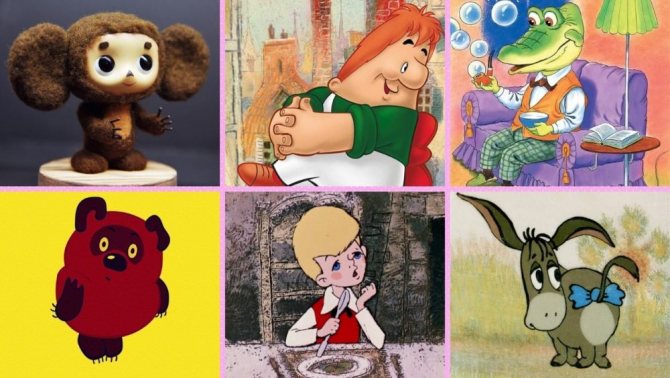
In the first version of the game, the teacher asks you to find a pair of “friends” for the pictures. Players justify their choice of why they consider these characters friends. Next, the children, with the help of the teacher, talk about the positive and negative traits of the characters, express their opinion on how the bad characters should change so that the good characters want to be friends with them.
After a preliminary acquaintance with the characters, the teacher shuffles the cards and gives each player 2 pieces. The remaining pictures are placed in the center of the table, images down. Each player takes turns turning over one of the cards from the central pile, looking to see if the turned over character is a friend for one of the heroes depicted in his two pictures. If yes, then the pictures that formed the pair are put aside and no longer participate in the game. For example, Cheburashka and the crocodile Gena, Winnie the Pooh and Piglet. If not, then the unused card is sent back to the pile. The player who is the first to find friends for his characters wins, and the one who is the last to complete the task loses.
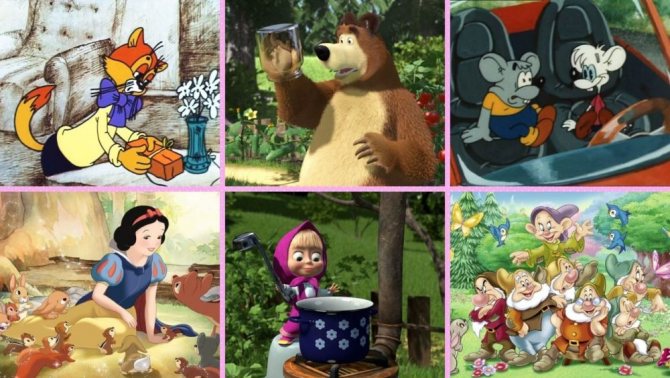
Physical education about friendship for children in the middle group of preschool educational institutions. Abstract
Sports entertainment for children 4-6 years old in the “Friendly Children” kindergarten.
The scenario was developed for children of middle and senior preschool age. This material may be useful to physical education instructors, kindergarten teachers, and parents.
You can hold an event for several different age groups (junior, middle and senior). Goal: To attract children to a healthy lifestyle through sports entertainment. Objectives: Health: To introduce children to a healthy lifestyle through physical activity. Educational: Form motor skills; practice performing basic types of movements through game tasks, teach how to play in a team. Educational: To cultivate attention, determination, to cultivate the ability to act in a team, a sense of camaraderie, to cultivate a friendly attitude towards each other, the ability to be friends, to yield, to be kind, caring, the ability to follow the rules in games. Developmental: Develop endurance, dexterity, spatial orientation, ingenuity, thinking Equipment: Arc, rope, ring throw, hoops, dummies of vegetables and fruits, hedgehog toy. Musical arrangement: Musical and rhythmic composition “There are friends”, musical accompaniment for games.
Progress of the entertainment:
Educator: Children, let's stand in a circle and hold hands. A new day has come, I will smile at you, and you will smile at each other. And think how good it is that we are all here together today. We are calm and kind, friendly and affectionate. We feel good here! We are friends and call each other by affectionate names. Game “Name it kindly.” Children take turns calling each other affectionate names. Educator: But sometimes we feel very sad. Let's show our mood. Physical exercise “Mood” The mood has dropped, (spread your arms to the sides and down, shrug your shoulders sadly) Things are falling out of your hands... (we hit the outer sides of the palms lightly) But not everything is lost yet, (finger left and right) If you have a good friend. (point to a friend) We can handle the matter together, (put our hands on a friend’s shoulders) Let’s breathe a sigh of relief - Eh, let’s lift our spirits (squat down, gather our spirits in our hands) And shake off the dust! (dust off hands). Educator: Guys, we know a poem about the friendship of boys and girls, let’s remember it. Imitation game "Girls and Boys". Boys and girls - Alternately put their right and left hands forward, palms up.
We are all equal,
Cross your fingers in a lock in front of your chest.
Just remember the boys
are threatening with the index finger of their right hand.
About one thing they must: Girls are weaker than them,
Press their hands to their chest and tremble.
They can squeak, and their boys should
pretend to be a strong man.
Bravely defend!
Educator: Dear guys! Today you and I will play fun and kind games that will help us get to know each other better and become friendly children. Relay race: “Running on all fours with crawling under an arc.” At the teacher’s signal, the children get on all fours and run faster, reach the arc and crawl under it. Educator: Guys, in the next competition we need to keep our balance and walk along a tightrope. Your task is to walk along the rope and not fall. Is the task clear? Reade set Go! “Walk the Rope” relay race. Holding hands, children walk along the rope without breaking their hands. Educator: Guys, with the next task we will test your accuracy. You will need to throw the rings onto a ring thrower from a distance. Relay: “Throwing rings.” Children approach the line and try to throw the ring onto the ring thrower.
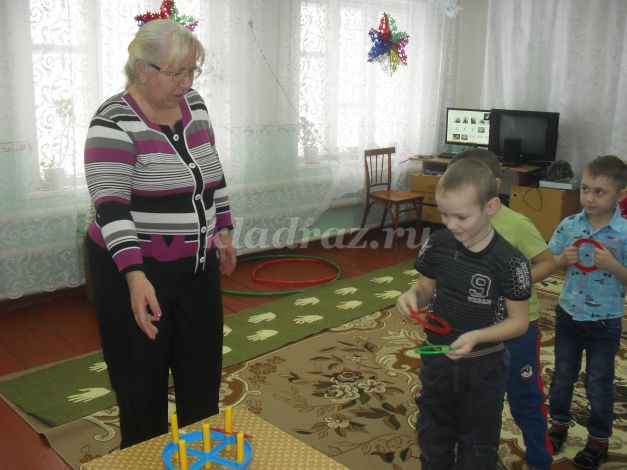
Educator: Well done, guys. Tired? No? Then the next task is for you. Game "Edible - Inedible". There is a basket with food and toys on the floor. Children must choose what is edible and inedible and run to the hoops, put the edible in the green hoop, and the inedible in the red hoop.
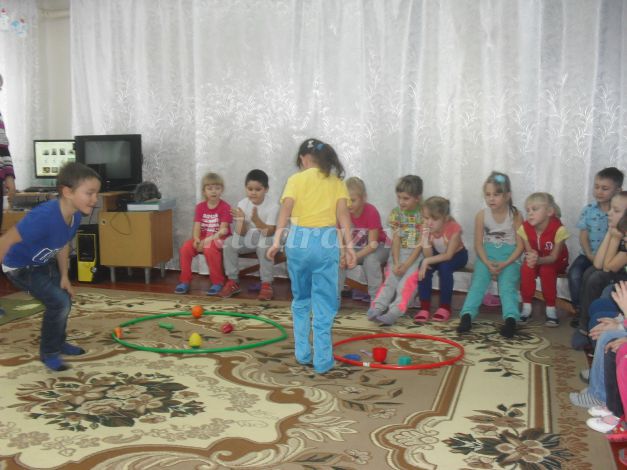
Educator: Attention: now we are turning into a “centipede”! Game "Centipede". Children stand one after another and put their hands on the belt of the child in front. The players must hold each other tightly so that the “centipede does not break.” The leader runs in a circle, around Christmas trees, etc.
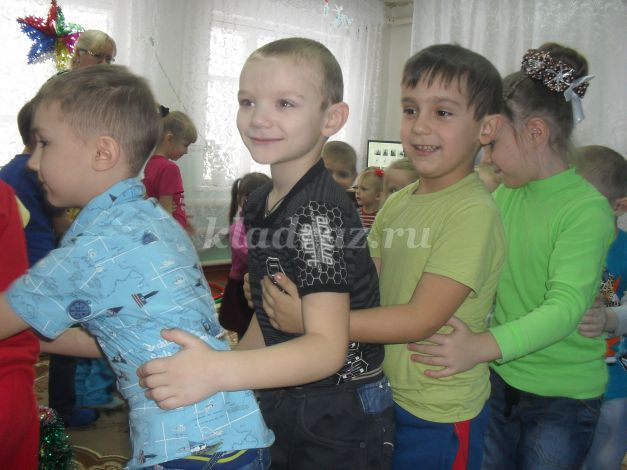
Educator: Well done! You are all cheerful and cheerful! Are we friendly guys? Children: Yes! Imitation game “How are you living?” - How do you live? — How do you do exercises in the morning? - How do you dance? - How are you threatening? - How do you wash? — How are you looking forward to lunch? - How do you wave after? -Are you looking into the distance? - How are you playing pranks?
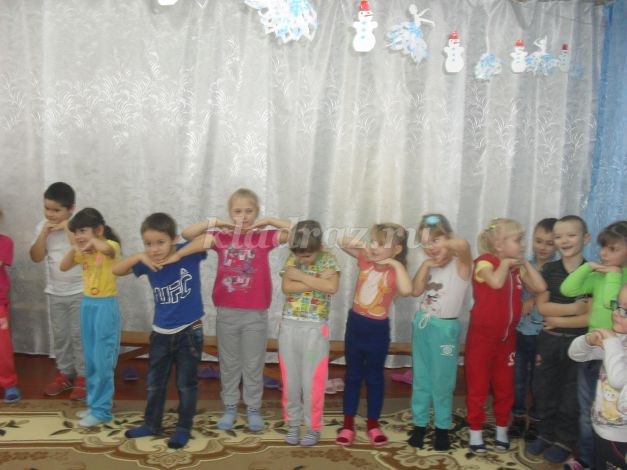
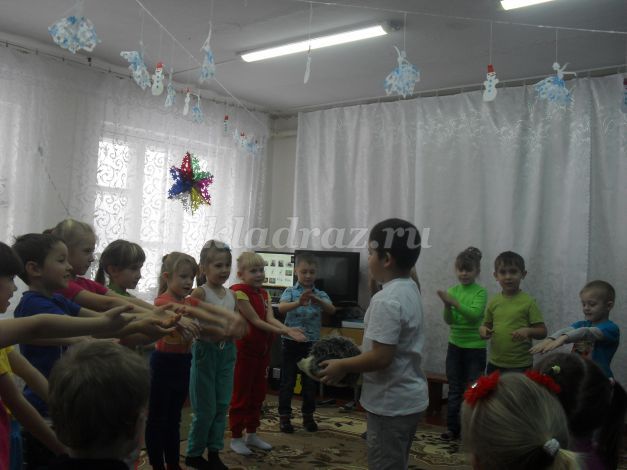
Educator: And now we have games for inseparable friends. Game "Couples". The players stand in pairs, scatter to the music and run in any direction. The music ends with the signal “Don’t sleep and don’t yawn, quickly choose a pair! "stand up in pairs, with those with whom they stood initially. Game "Vacuum cleaner and specks of dust." To the music, children-motes fly all over the room, spin around themselves and, spinning slower and slower, settle on the floor. But as soon as the music stops, the vacuum cleaner starts working. The teacher collects all the dust particles, touching the dust particles on the shoulder. Whoever he touches stands behind him and further collects dust particles. Educator: And now a fun dance for cheerful and friendly children. Dance "Have Friends"
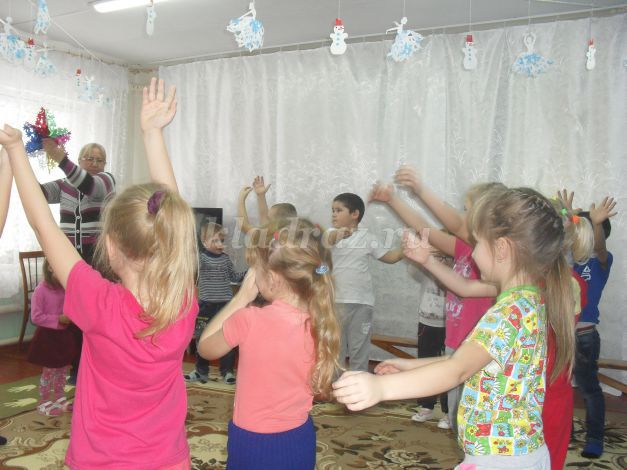
We recommend watching:
Scenario of physical education for children of the middle group. Leisure according to traffic rules in kindergarten. Middle group Scenario of physical education for children in the middle group of kindergarten Scenario of physical education for the senior group of kindergarten
Similar articles:
Physical education activities for middle group children on the topic “Health”
Magic flower
To play, prepare a doll and a three-dimensional paper flower with tear-off petals.
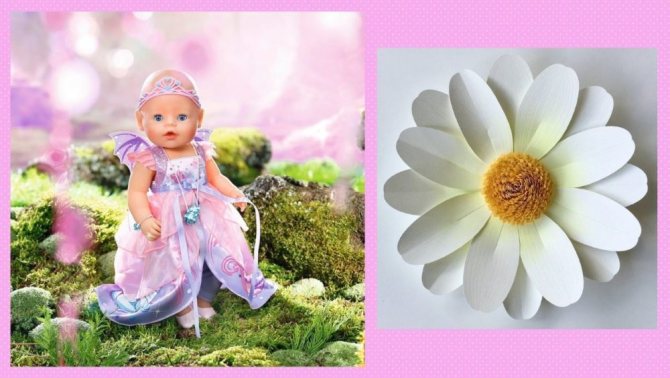
The teacher tells the students that the doll is upset. A friend gave her a magic flower. But the doll offended her friend, because of this the flower’s petals flew off. The teacher asks the children to help the doll restore friendship and revive the flower. To do this, each player must tell what true friends should not do. When the player makes his guess and it turns out to be correct, the teacher attaches another petal to the core of the flower. When the flower is completely assembled, the doll thanks the children for their help.
Friendship is strong
The game develops the skill of mutual assistance, joint execution of actions, and the ability to control and correct the activities of a friend. Children learn to trust and help.
Before the game starts, the teacher tells the students that friendship implies mutual help and support, that friends are able to overcome any obstacles together. The players form a chain and grab the comrade standing in front by the shoulders. It turns out to be a human “caterpillar”. This “caterpillar” must perform various tasks, while children should not let go of their comrades’ shoulders. For example:
- climb on and off a stool;
- run like a snake;
- step over a puddle;
- crawl under the table;
- make your way between nearby tree trunks.
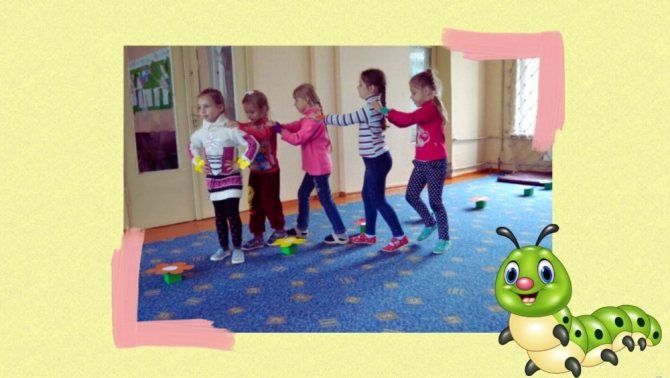
All-Russian interactive educational portal "Axioma"
performed:
Teacher - psychologist MBDOU "Rucheyok" Kovalenko Elena Vladimirovna
MBDOU "Rucheek"
Yamalo-Nenets Autonomous Okrug, Noyabrsk
Game training for older preschoolers “Friendship”
Teacher - psychologist MBDOU "Rucheyok" Elena Vladimirovna Kovalenko Purpose of the lesson: -relieving emotional and muscle tension -developing a sense of empathy and cooperation. - expand and generalize children’s knowledge about the concepts of “friend”, “friendship”. -introduce children to the rules of friendly relations. -promote the development of communication skills and abilities.
Topic: Today in class we will talk about friendship and get acquainted with the rules of friendly relations.
1. “Compliments” Psychologist: “Now we will look at each other carefully and carefully. And now each of us in turn will give one compliment to each. Let's go in a circle, I'll start.
2. Conversation about friendship. Psychologist: Mishka came to visit us today. He told us in confidence that he had no friends at all. And he asks us to teach him to be friends. Shall we help Mishka? Yes? Then, let's tell Mishka: • What is friendship? • Why do we need friends? Psychologist: Friendship is when people want to be together, when they play together, communicate, and don’t quarrel. Friendship is the smiles of friends. Friends are people with whom we enjoy playing. Friendship is when you know how to come to an agreement without shouting and quarreling; share toys, speak politely and not be rude; be attentive (caring) to a friend; be able to sympathize with a friend. If a friend is happy, then rejoice with him; if there is trouble, then be sad together.
3. Game “Good - bad”. Psychologist: In order to teach the bear to be friends, we will play with you the game “Good - bad.” Let's listen to the rules of the game. I will talk about people's actions. If the deed is good, smile and clap your hands; if it is bad, remain silent and frown. (The psychologist names actions: “quarrel, help others, fight, make peace, greet each other, brag, ask for forgiveness, be greedy, share, call names, say nice words, be polite, be rude, give in”).
4. “Change seats, everyone who...” The psychologist says that we are all very different and at the same time somewhat similar to each other. Offers to verify this. Then he says: “Sit down, everyone who likes ice cream, ... swimming in the river, ... going to bed on time, ... putting away toys, etc. At first, children just play, and then they conclude that they really have a lot in common.
5. Game “Make friends with a fairy-tale hero” (3 min) Psychologist: Guys, I’ll take turns showing you pictures of characters from different fairy tales and cartoons. All of them have different characters and actions. The psychologist shows pictures with characters one at a time (Cinderella, Thumbelina, Pinocchio, Baba Yaga, Leopold the cat, Koschey the Immortal, Gorynych the serpent, Luntik). After showing each picture, the psychologist asks the children why they would/would not want to be friends with the fairy-tale hero. Psychologist: Why didn’t you choose these heroes? (shows pictures of negative characters that the children did not choose). Children: ... (children's answers). Psychologist: No one wanted to be friends with the evil, greedy, unfriendly heroes of fairy tales. In order for people to want to be friends with us, we need to have good qualities. Be kind, cheerful, honest, ready to help. But you can also make friends with negative characters, but you need to teach them to be kind, not to do bad things, and teach them the rules of friendship.
6. “Mittens” For this lesson you need mittens cut out of paper with various unpainted patterns. The number of their pairs must correspond to the number of pairs of participants. Each child is given one mitten cut out of paper, and the children are asked to find their own pair, that is, a mitten with exactly the same pattern. When a pair of identical mittens meets, the children must color the mittens the same way as quickly as possible and (most importantly!). Each pair is given only three pencils of different colors.
Psychologist: Game. “Friends” Children are divided into small and large circles. Children stand opposite each other and sing a song: Turn the key in the heart (Depict turning the key with your hand, opposite the heart) Open the door in the heart (Depict with your hand how the door opens) Sing the magic words: “I am my friend, I love you” (Hug and big circle changes partner, the small circle stands still). Repeat three times.
Reflection.
Find a friend
To play, you need to cut out masks from thick paper that depict different emotions, positive and negative. It is necessary to first talk with children about how this or that emotion is expressed facially.
Children stand in a row and put on masks. Each player takes turns coming forward, the teacher invites him to find a friend. When the child makes a choice, you need to ask him why he chose this particular mask, what attracted him to it, what emotions it expresses.
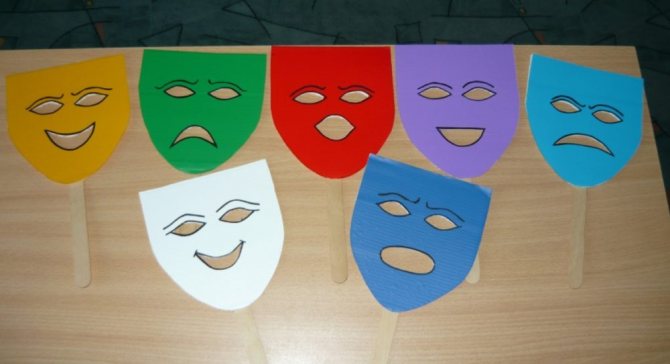
CHILDHOOD GUIDE
Card index of games for goodwill
for children 3-4 years old
Ivanenko Galina Alekseevna,
teacher of MBDOU No. 5,
Pavlovo, Nizhny Novgorod region.
“The sun illuminates friendship”
Goal: developing children’s friendliness towards each other, the desire to please.
A circle is drawn on a piece of paper. Children paint their palms with gouache and print a palm in a drawn circle, with whom they would like to create a couple next to.
"Compliments"
Goal: develop emotional sensitivity, practice verbal communication skills. Sitting in a circle, everyone joins hands. Looking into your neighbor's eyes, you need to say a few kind words to him, praise him for something. The receiver nods his head and says: “Thank you, I’m very pleased!” Then he gives a compliment to his neighbor, the exercise is carried out in a circle. Some children cannot give a compliment; they need help. Instead of praising, you can simply say “delicious”, “sweet”, “floral”, “milk” word. If a child finds it difficult to give a compliment, do not wait for his neighbor to be sad, give the compliment yourself.
"Friendship begins with a smile"
Goal: to practice nonverbal communication skills. Children sitting in a circle hold hands, look into their neighbor's eyes and silently smile at each other.
"Friends"
Goal: to create a sense of unity, cohesion, and the ability to act in a team. Children stand in a circle. 1 verse. Here you are, here I am (stretch your palms forward), You can’t quarrel (they shake a finger at the center)! Here you are, here I am (stretch your palms forward, then place them on your chest), Together we are friends (hold hands)! Here you are, here I am (stretch your palms forward, then put them on your chest) You can’t quarrel (they shake a finger at each other) Here you are, here I am (stretch your palms forward, then put them on your chest) Together we are friends (hug each other friend).
"Animal Piano"
Goal: develop the ability to cooperate with each other. Children sit in one line (it turns out to be a piano keyboard). The presenter gives each child cards with images of animals, whose voices will sound “keys” (cat, dog, pig, mouse, etc.). The presenter, that is, the “pianist,” touches the children’s heads (“plays the keys”). And the “keys” each make their own sound. You can also play on your knees – the keys. Then you can also introduce sound volume into the game. If the pianist touches the key lightly, it sounds very quiet, barely audible, if more strongly, it sounds loud. If it is strong, then the “key” is to speak loudly.
"Merry little engine"
Goal: To develop the cohesion of a group of children, the ability to overcome obstacles together. The presenter is a “locomotive” who must make up a train of children. The guys are assigned the role of “carriages”. The “locomotive” drives up to each of the “cars” in turn and gets acquainted with it. When naming a name, you can ask the guys to come up with one good word for themselves, for example: “I’m the funny little engine Lena, and who are you?” - And I’m a beautiful trailer, Sasha. - Let's move on together. - Go. The children go after the next “car”, and so on until a whole funny train is assembled. Then the children stand one after another. In this position, they overcome various obstacles: Throughout the entire exercise, children should not become detached from their partner. The train that arrives at the finish line in full strength is awarded (“The engine and the carriages were very attentive, took care of each other and therefore did not lose anyone along the way”).
"Palm to palm"
Goal: developing communication skills, gaining experience interacting in pairs, overcoming the fear of tactile contact. Age: any. Number of players: 2 or more people. Necessary equipment: table, chairs, etc. Description of the game: children stand in pairs, pressing their right palm to their left palm and their left palm to their friend’s right palm. Connected in this way, they must move around the room, avoiding various obstacles: a table, chairs, a bed, a mountain (in the form of a pile of pillows), a river (in the form of a laid out towel or a children's railroad), etc. The game will be useful for children experiencing difficulties in the communication process.
"Tender name"
Goal: to develop the ability to make contact and pay attention to peers. Children stand in a circle, passing the baton (flower, “magic wand”) to each other. At the same time, they call each other by an affectionate name (for example, Tanyusha, Alyonushka, Dimulya). The teacher draws the children's attention to the gentle intonation.
"Polite words"
Goal: developing respect in communication, the habit of using polite words. The game is played with a ball in a circle. Children throw a ball to each other, saying polite words. (hello, good afternoon, hello, we are glad to see you, glad to meet you); gratitude (thank you, thank you, please be kind); apology (sorry, pardon, sorry, sorry); farewells (goodbye, see you later, good night).
"Friendship begins with a smile"
Goal: to practice nonverbal communication skills. Children sitting in a circle hold hands, look their neighbor in the eyes and silently smile at each other.
“The bird’s wing hurts - have pity on the bird”
Goal: to promote the development of children’s ability to cooperate with children. One of the children turns into a bird whose wing hurts. He tries to show that he is sad. The presenter invites the children to “feel sorry for the bird.” The first to “pity” her is the presenter himself, who puts a kitten doll on his hand and strokes the “bird” with its paws with the words: “Bird... (Sasha, Masha) is good.” Then other children put the kitten doll on their hand and also “feel sorry for the bird.”
"Who better to wake you up"
Goal: to promote in children the ability to love others. One child turns into a cat and falls asleep - lies down on the rug in the center of the group. The presenter asks the children to take turns waking up the “sleeping cat.” It is advisable to do this in different ways (different words, different touches), but each time affectionately. At the end of the exercise, the children decide together who “woke up the cat” most affectionately.
“Who has more favorites?”
Goal: to promote in children the ability to love others. The presenter says that every person has many “favorites” - people they love. A competition is proposed: name as many of your “favorites”, that is, your favorite people, as possible. During the discussion, the conclusion is made about how good it is when a person has many people whom he loves.
“Who came to visit us?”
Goal: to promote the development of self-esteem in children; activate children's friendly attitude towards their peers. The leader takes two or three children from the group aside and agrees with them that they will portray animals that will come to visit the children. Children decide which animals they will portray and how they will do it. “Guests” take turns entering the circle, the leader, turning to other children, says something like this: “Look what a wonderful animal has come to us, what eyes it has, how beautifully it moves...”, etc. Children must first guess what animals came to them, and then say what mood they were in. Then the presenter asks how they guessed that the mood was good, cheerful, joyful, because the animals were silent.
"I'll show you how much I love"
Goal: to promote in children the ability to love others. The host says that you can show a person that you love him only with touches, without words. Then one of the guys turns into a mother, the other into her son, and they show how much they love each other. The next pair is “mother” and “daughter”, and then “grandmother” and “grandson”, etc. At the end of the exercise, it is discussed who and how was able to most successfully demonstrate “how he knows how to love.”
"A leaf is falling."
Goal: to develop children's ability to cooperate. The presenter lifts a sheet of paper above the table (at a distance of about a meter), then releases it and draws the children’s attention to how smoothly it goes down and lies on the table. After this, the presenter asks the children to turn their hands into pieces of paper. The presenter again raises the sheet of paper - the children raise their hands up. The presenter releases the sheet and it falls onto the table. Children need to do the same, that is, smoothly lower their hands onto the table at the same time as the sheet of paper.
"Pencil - brush"
Goal: to develop children's ability to cooperate. The presenter shows the children how to draw a pencil - with a tense hand extended forward. Then everyone together depicts a brush - with a soft curved hand. Then the leader gives the children different commands. At the command “Pencil!” - children tense their hand, pretending to be a pencil, at the command “Brush!” - relax the hand. After some time, you can include the second hand in the exercise... The presenter emphasizes the children’s ability to act in concert, together.
"Wizard"
Goal: to promote trust in the group. Children stand in a circle and put their hands on each other's shoulders. Then one of the 31 children becomes a "wizard". He is blindfolded and taken to another place in the circle. Now others are standing next to him. Putting his hands on the shoulders of the children standing nearby, the “wizard” must guess who it is.
“I can’t be offended, oh, I laugh, I crow!”
Goal: to help reduce resentment in children. One child sits on a “magic chair”, and the other pretends to offend him. At the same time, the adult begins to say the words: “I can’t be offended...” - the child continues: “Oh, I’m laughing, I’m crowing!”
“Let the one I point to stand up”
Goal: to promote the development of mutual understanding between children. An adult drives first. He looks around at the children, then whoever he points to stands up. Then all the children take turns driving.
"Offended bush."
Goal: to promote in children the ability to love others. One of the children plays the role of an offended bush whose several branches were broken. He sits in the center of the circle and is sad. The children take turns trying to console him and feel sorry for him.
“Stop, fist!”
Goal: to promote the development of self-control in children in conflict situations. A pair of children is selected. One child “make-believe” teases another, trying to “make-believe” provoke a fight. The other one needs to keep smiling and mentally say “stop” to his fists. The leader, lightly touching the child’s hands with his own hands, prevents the “offended” person’s hands from remaining relaxed and not clenching into fists.
“Who loves more?”
Goal: to promote improved communication with peers. A child is selected to be the driver, the rest of the children are divided into two groups. The driver steps aside, and the groups take turns shouting loudly: “We love... (Sasha)!”, while calling the driver’s name. The leader determines which group shouted louder. She is believed to have won. "Necklace".
Goal: the ability to do good deeds.
With your baby, make a magnificent necklace from pasta strung on a thread for your grandmother or favorite teacher. During the creative process, repeat all the kind words that the child knows. Tell us how to give and receive gifts correctly.
"To help the birds"
Goal: to develop in children the desire to love birds. Make the simplest feeder together (you can use a paper milk carton) and hang it on a tree near your house. Don't forget to regularly add seeds, bread crumbs and watch the birds. Explain why city birds need to be fed, especially in the cold season.
"Sad bunny
Goal: the child’s desire to care, to feel sorry
Find a “fluffy” with a sad expression among the soft toys. Read to your child a poem by A. Barto about an unfortunate abandoned bunny. Say for the toy: “For some reason no one loves me. And no one, no one plays with me.” The child will definitely grab it and press it to him.
"Puppet show"
Goal: promoting the formation of a child to be kind.
Create a real puppet theater at home, acting out a variety of good stories with your baby. Take Russian folk tales and psychotherapeutic stories as a basis, suitable for a specific life situation. After the performance, discuss good and evil characters. Find out who your child would like to be like.
"Box of Good Deeds"
Goal: To create a desire to do good deeds.
Cut out any shapes from thick colored paper or cardboard: hearts, flowers or circles. At the end of the day, invite your child to throw as many flowers and hearts into the box as he has done good deeds today. If he is at a loss, try to find kindness in the smallest good deeds.
"I am a hero"
Goal: the ability to come to the rescue, sympathize.
In any developmental notebook you can find tasks for the development of fine motor skills: labyrinths and drawing fences. Take them into account. For example, let your child help a hedgehog carry an apple along a confusing path to a house or draw a fence to save a mouse from a cat. Explain that in life you need to provide help to everyone who needs it.
"Call me kindly"
Goal: the desire to call your friends affectionately.
Ask your Vanya or your Lizonka to call their family, friends and, of course, you just as affectionately.
How can you affectionately call Baba Katya? Grandma Katenka. How will he affectionately call his preschool friend Sergei? Serezhenka. Try to remember all the child’s friends and change their usual names to diminutive ones. Suggest using diminutive names for all surrounding objects: crib, ball, bunny, doll, etc. Card index of games for children 2-3 years old Card index of didactic games for speech development Card index of didactic games for the middle group Card index of role-playing games >
